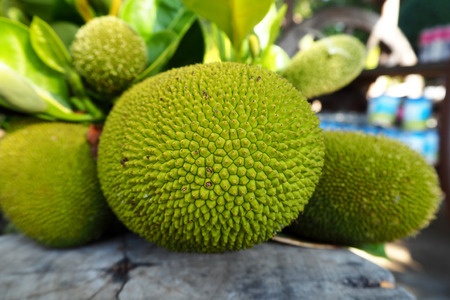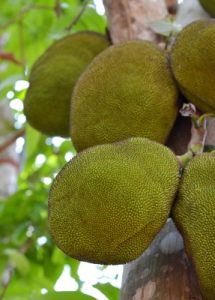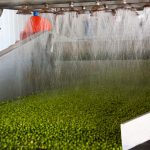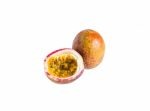
Jackfruit, Jak or Jaca is increasingly finding its way onto the fruit and vegetable shelves. It has become a doyen of the vegan lifestyle.
The fruit comes from a very large Southeast-Asian tree which is said to have a texture similar to pulled pork. I’ve avoided saying it is a ‘jackfruit’ of all trades but then again it was bound to be said. It is high in fiber and low in calories, but the fruit of a large Southeast Asian tree fruit has a texture likened to that of pulled pork.
The Jackfruit
The genus Artocarpus is made up of 50 species of both evergreen and deciduous trees belonging to the Moraceae family (Bose, 1985). The species Artocarpus heterophyllus Lam., an evergreen is indigenous to India and Bangladesh but is nowadays cultivated in most tropical countries, especially Thailand and Brazil. The fruit itself is highly variable and could be grown far more widely if the belief that too much consumption causes stomach cramps and intense flatulence (Samaddar, 1985) which may be due to the presence of its lectin, jacalin (Kondoh et al., 1986). The tree also suffers from inconsistent germination. It should not be confused with the related species called ‘breadfruit’ (Artocarpus altilis).

The fruits are usually eaten raw, pickled, cooked, dried into flakes and processed into juice or pulp. The fruit yield is possibly one of the highest of all tree species (Alagiapillai et al., 1996). Each fruit averages between 10 and 25 kg in weight when mature which is extremely heavy (Reddy et al., 2004) but weights up to 50 kg have been recorded. There are different forms – a soft and hard/firm variety based on the consistency of the pulp. The softer fruit produces a richer, more confectionary pulp flavour (Cavalcante, 1991).
The dried fruit contains per 100g of fruit, the following:- 18.9g carbohydrates, 0.8g minerals, and 30 IU vitamin A and 0.25mg thiamine, which makes it extremely nutritious, however it is seen as a poor man’s fruit in eastern and southern areas of India. The large sized Jackfruits, however, weigh as much as 50kg (Selvaraj and Pal 1989). On average, in ripe Jackfruit, the bulbs, seeds and rind form 29%, 12%, and 59% of the bulk, respectively. The edible bulbs have pH 5.1, about 25% carbohydrates and 1% total ash (Narasimham, 1990).
Variation in the starch, total sugar and reducing sugar contents of soft and firm types of jackfruits has been reported (Nandini 1989; Rahman et al., 1999). The total acidity in jackfruit is low (0.13%w/w as citric acid) at the ripe stage, thus the pulp is ideal for soft drink development as it can be added as a base. This characteristic remains constant during ripening (Bhatia et al., 1955; 1958). Variation in the aroma volatiles from the two forms of Jackfruit has also been reported (Maia et al., 2004). The cotyledons (seeds) yield a fine starch (Kittipongpatana and Kittipongpatana, 2011) and protein (Singh et al., 1991).
Post-harvest losses are high, up to 40%, if the fruit is transported to places where it is more economic to sell it. Picking slightly under ripe fruit so that it ripens during transport and storage, careful handling and packing all contribute to preserving the freshness of the product. Storage for between 3 to 10 days is common. The fruit also needs to be washed thoroughly to remove considerable amounts of detritus from the harvesting.
The author has noticed in shop bought fruit from abroad that presentation is not always thoroughly followed. To pulp the fruit, it is necessary to cut away the rind with an automatic knife and release the ‘bulbs’ which can then be milled or ground to generate the pulp. The seeds are usually discarded although the starch can be processed. This pulp is often boiled prior to canning or creation of a beverage but it is essential to minimise this step to prevent excessive damage to the delicate aroma. Its probably wisest to freeze the freshly generated pulp if the pulp is not used immediately. I’d refer the reader to an article by Munishamanna et al., (2007) for further reference on processing and recipes.
Jackfruit Used In Food Product Development
Several vegan brands are using the fruit in their formulations. This includes the Jackfruit Co., Upton’s Naturals, and Yves Veggie Cuisine, who offer packaged Jackfruit dressed in savoury sauces to replace meat in tacos or sandwiches.
Kara Nielsen, culinary trendologist at Sterling-Rice Group is quoted in a report to Food Business News (2016) that:-
“It’s certainly interesting to see innovators in the food space borrowing from other cultures in other parts of the world and tapping into an ingredient that has long been used as a meat substitute or meal filler.”
“We know Jackfruit has been used in India and Southeast Asia where it grows, where it has been used as a meat substitute or a center ingredient in a main dish.”
She also claimed some new insights for product development that:-
“Jackfruit does not have same amount of protein as other meat substitutes or meat analogs, so seeing this not-very-protein-rich ingredient take the place of savory meat fillings is interesting… and takes the conversation for vegetarian and vegan meals in a new direction.”
Jackfruit In Cosmetics
Extracts of Jackfruit are now available for increasing creatine uptake into skin cells.
Revised: 20th December 2016 with inclusion of items on product development.
References
Alagiapillai, O.A., Kuttalam, P.S., Subramanian, V., Jayasekhar, M. (1996) PPI-I jack: a new high yielding, regular bearing jack variety for Tamil Nadu. Madras Agric J. 83 pp. 310–2.
Bhatia, B.S., G.S. Siddappa and G. Lal. (1955) Composition and nutritive value of jackfruit. Indian J. Agri. Sci. 25(4): pp. 30-36.
Bhatia, B.S., Siddappa, G.S., G. Lal. (1958) Physico-chemical changes in jack fruit squash during storage. Indian J. Agric. Sci. 25 pp. 43-46
Bose, T.K. (1985) Jackfruit by samadday HN. In: Mitra BK, editor. Fruits of India: tropical andsubtropical naya prokas. Calcutta, India. p 488–97.
Cavalcante, P. B. (1991). Frutas comestıveis da amazonia. Belem: Museu Paraense Emı¨lio Goeldi, Editora CEJUP.
Food Business News (2016) http://www.foodbusinessnews.net/Resources/Slideshow/2016/5/Nine-natural-food-trends-in-2016/1.aspx?TipID=0
Kittipongpatana, O.S.; Kittipongpatana, N. (2011). Preparation and physicochemical properties of modified jackfruit starches. LWT-Food Science and Technology, 44, pp. 1766–1773.
Kondoh, H., Kobayashi, K., Hagiwara, K., Kaji. T. (1986) Jacalin, a jackfruit lectin, precipitates IgA1 but not IgA2 subclass on gel diffusion reaction. J. Immunol. Methods 88 pp. 171–173.
Maia, J.G.S., Andrade, E.H.A., Zoghbi, M.G.B., 2004. Aroma volatiles from two fruit varieties of jackfruit (Artocarpus heterophyllus Lam.). Food Chem. 85, pp. 195–197.
Munishamanna, K.B., Ranganna, B., Subramanya, S., Chandru, R., Palanimuthu, V. (2007) Development of Value-Added products from Jackfruit (Artocarpus heterophyllus L.) to Enhance Farm Income of Rural people. In: Int. Conf. 21st Cent. Challenges to Sustainable Agri-Food. Edt. Chengappa, P.G., Nagaraj, N., Kanwar, R. (Publ. IK Int. Publ. House New Delhi. India) Chapt. 64 pp.508-516
Narasimham, P., 1990. Breadfruit and jackfruit. In: Nagy, S., Shaw, P.E., Wardowski, W.F. (Eds.), Fruits of Tropical and Subtropical Origin: Composition, Properties and Uses. Florida Science Source Inc.,Florida, pp. 193–259.
Reddy, B.M.C., Patil, P., Shashikumar, S., Govindaraju, L.R. (2004) Studies on physico-chemical characteristics of jackfruit clones of south Karnataka. J Agric. Food Sci. 17 pp. 279–82.
Samaddar, H.N. (1985) Jackfruit. In: Bose TK, editor. Fruits of India: tropical and subtropical Naya Prokash, Calcutta, India. p 487–97.
Selvaraj, Y., Pal, D.K. (1989) Biochemical changes during the ripening of jackfruit (Artocarpus heterophyllus L.). J. Food Sci. Technol. 26 pp. 304–7.
Singh, A., Kumar, S. & Singh, I.S. (1991). Functional properties of jackfruit seed flour. Lebens. Wissenschaft & Technol. 24, pp. 373–374.



Leave a Reply